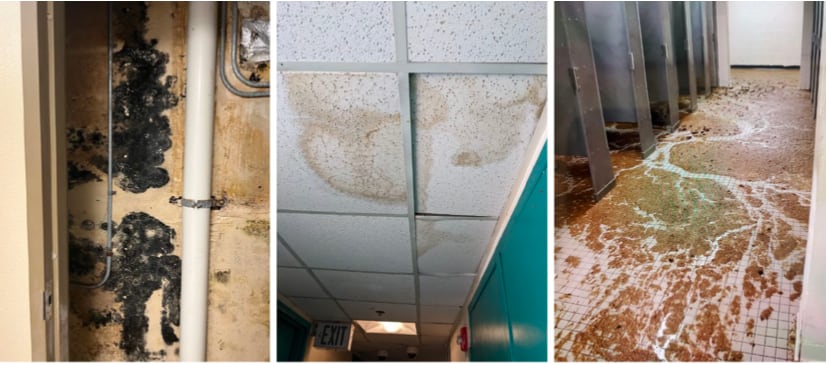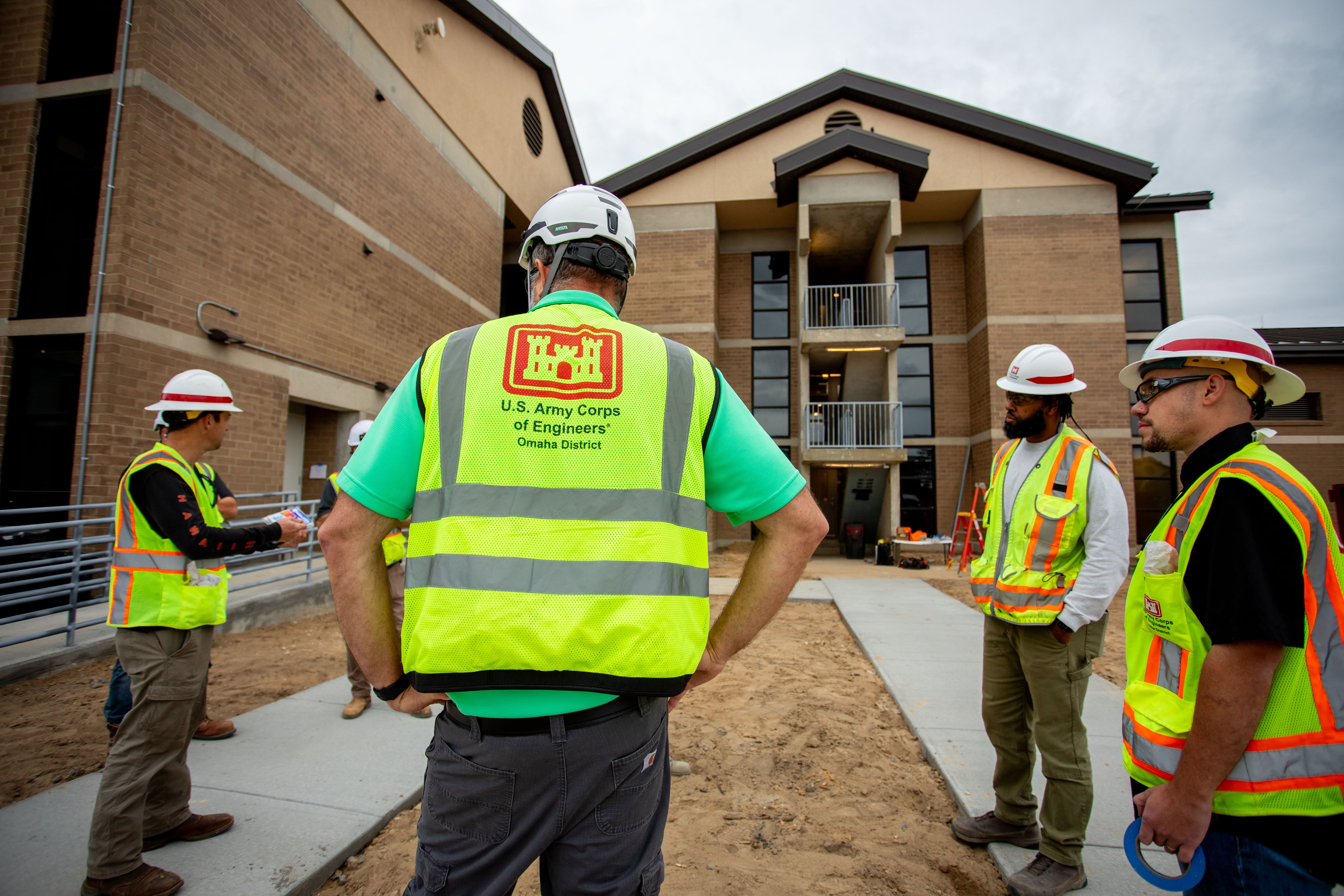Leaders at one the Army’s largest installations are working short- and long-term solutions to quality-of-life problems plaguing the post, including overflowing trash, outdated roads, barracks, school and child care shortages.
On the short-term front, trash overflow reports at Fort Liberty, North Carolina, emerged this past week, sparking media coverage and a swift response from garrison leadership.
Substantial amounts of garbage had accumulated across the post, some near living quarters, Army Times reported on Tuesday. Photos posted online showed furniture, trash bags, cardboard and old food containers littering the area.
“This is obviously unacceptable,” Lt. Gen. Chris Donahue, XVIII Airborne Corps commander, told reporters on a Thursday phone call.
RELATED

The airborne corps’ headquarters is on Fort Liberty outside of Fayetteville, North Carolina. The unit oversees post units and various other airborne and operational units in other locations.
The immediate response included bringing in additional trash containers for the overflow, said Col. John Wilcox, Fort Liberty garrison commander.
The private company contracted to manage waste disposal has been operating at reduced capacity due to equipment issues, officials said. As of Friday, 40% of dumpsters remained full, but officials were actively working to clear the trash pickup backup.
Donahue declined to discuss details of the contractor’s situation but told reporters a more permanent solution would be shared next week.
“We are working diligently to ensure that this does not happen again,” Donahue said.
Larger infrastructure challenges at Fort Liberty are seen across the Army and other military branches. Military Times reported Thursday the Pentagon’s rollout of a new Strategy for Resilient and Healthy Defense Communities to tackle quality of life improvements on installations, including infrastructure repairs and upgrades.
Top priorities include barracks repairs and improvements and upgrades to child development centers. Deputy Defense Secretary Kathleen Hicks told Military Times on Wednesday.
The new strategy should prioritize facilities reaching basic compliance with health and safety codes, as well as upgrading and revamping facilities to be more functional, Hicks said.
One such example at Fort Liberty is Smoke Bomb Hill barracks, the focal point of soldier housing problems on the installation in 2022 when 1,200 soldiers were relocated after the facility fell dangerously short of heating, ventilation and air conditioning standards.
Then Sergeant Major of the Army Michael Grinston inspected the barracks himself following some of the revelations that the building had conditions ripe for mold and presented “quality of life concerns,” according to a statement at the time from installation officials.
Soldiers with the 35th Signal Brigade have already conducted walk through inspections of the barracks and officials expect to move furniture into the rooms by March 15, Donahue said.
But the larger problem of simply enough barracks rooms for soldiers on the installation will take longer to fix.
Wilcox said there are 18,000 barracks spaces on the installation and most of them were built before 1970. The post has been experiencing a 2,000 bed space shortage, largely due to renovations on aging buildings, Fort Liberty spokeswoman Cheryle Rivas told Army Times.
Installation officials have three new barracks buildings planned for construction throughout the next 10 years.
Two barracks projects are slated to start in 2024 and the third will begin in fiscal year 2027. All three will be completed within the next 10 years. In total, the three buildings will add 476 bed spaces, Rivas said.
But that won’t solve the current shortage of rooms.
In the short term, some soldiers will continue to be housed off-post, however, Garrison Command. Sgt. Maj. Gergory Seymour said that they will use some of the junior enlisted family houses in the Saint Mere Eglise neighborhood of family housing.
The two and three bedroom homes will provide 180 spaces for soldiers not housed in barracks or off-post, Seymour said.
For families with children, the installation is undergoing a design phase for one new child development center that should begin construction in fiscal 25. Officials have requested funding for two additional centers. If all three are approved, that would add space for 330 to 350 more children in the new centers.
Currently, Fort Liberty has 11 child development centers with a total capacity of 1,388 people. The installation also has three school age service facilities with a capacity of 511 and two youth centers with a 330-youth capacity, Rivas said.
Post officials also are currently working with Cumberland County, North Carolina, to identify a site location on post land to build a new E.E. Smith High School, which will offer standard high school education along with a specialized Science Technology Engineering Math curricula in partnership with various North Carolina colleges and universities.
“We think E.E. Smith can be the premiere STEM school in North Carolina, if not the East Coast,” Donahue said.
Timelines for that project have not yet been set.
On the operational side, Donahue said Airborne Corps and Fort Liberty leaders finished initial planning on a new XVIII Airborne Corps headquarters, a massive joint deployment warfighting complex on the installation that would replace 26 existing, aging buildings.
The complex, which does not yet have a construction timeline, will combine the four operational division headquarters, one expeditionary sustainment command and seven separate enabling brigades into one location. That move would bring together all aspects of planning, coordination and execution for those units, said Col. Mary Ricks, XVIII Airborne Corps spokeswoman.
Key arteries for getting soldiers, families and civilian workers on and off post are feeling the strain. Various roads, streets and parking lots on the installation have been closed periodically while under repair or reconstruction in recent months.
Wilcox told reporters that the installation is dedicating 10%–20% of its federal installation infrastructure funds to improving major road networks throughout the next five to 10 years.
Todd South has written about crime, courts, government and the military for multiple publications since 2004 and was named a 2014 Pulitzer finalist for a co-written project on witness intimidation. Todd is a Marine veteran of the Iraq War.




